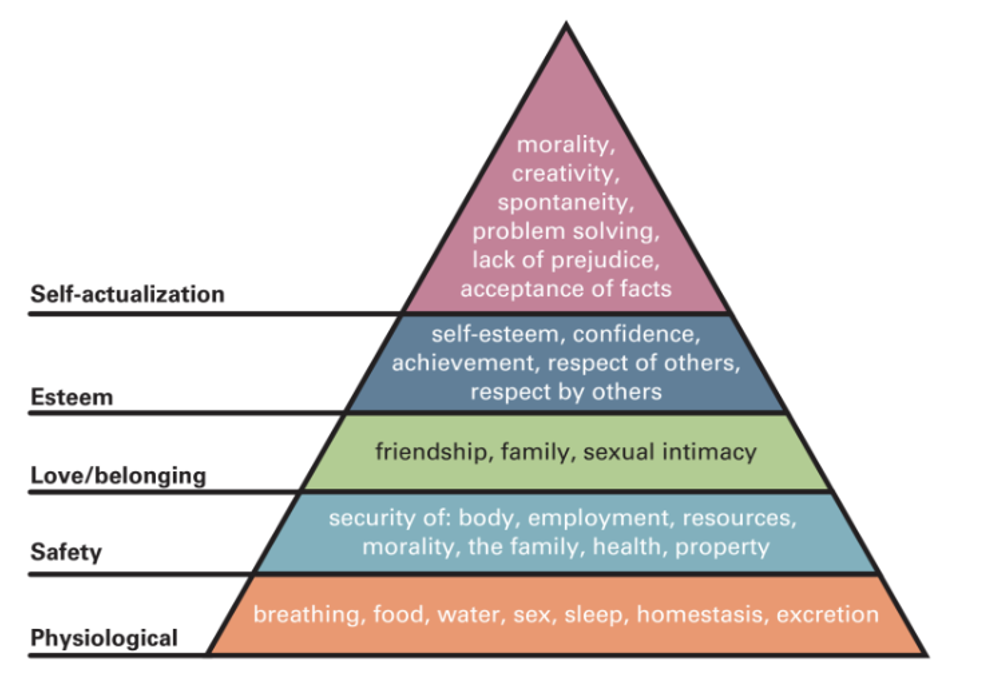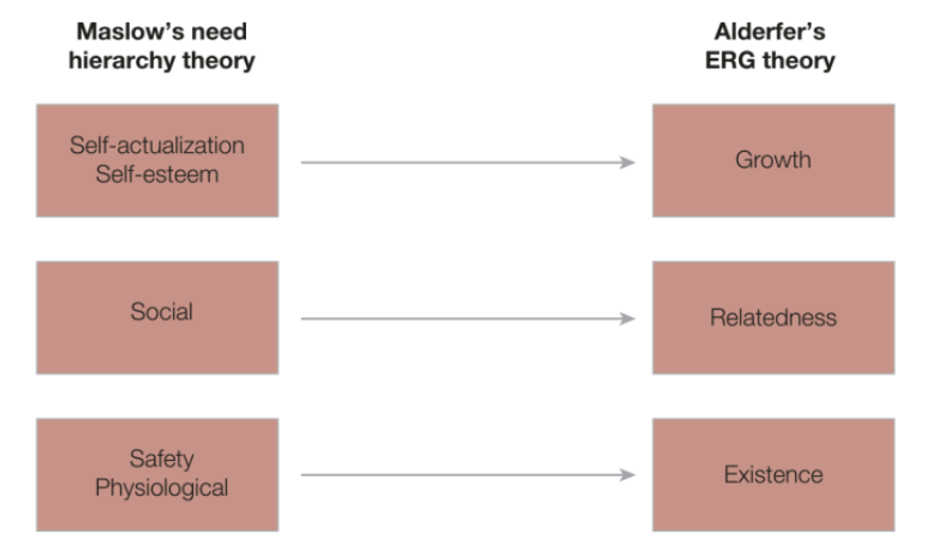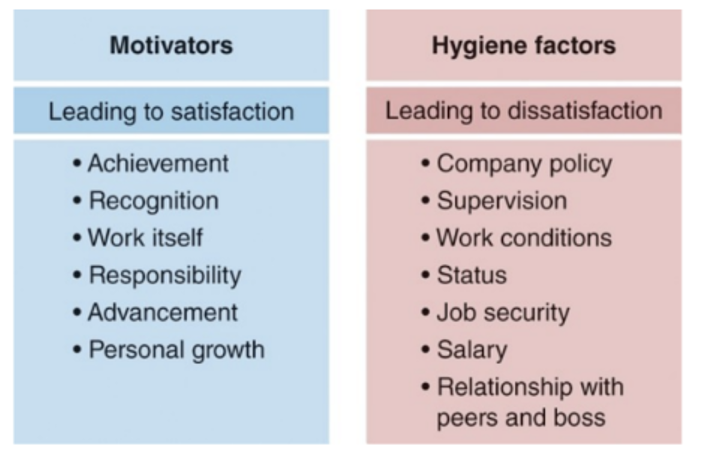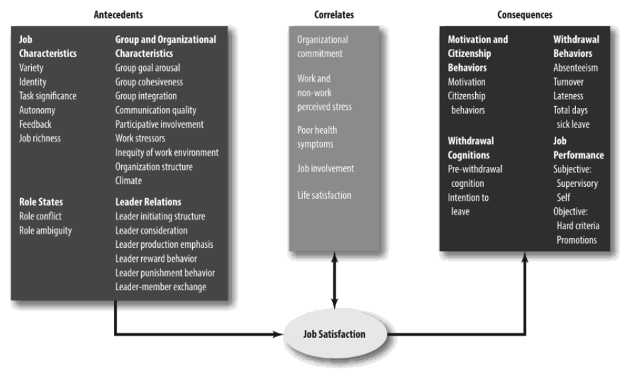Introduction
Employment forms one of the main parts of human life (Inayat, 2021). In the rapidly changing modern environment, the workforce market is characterised by increasing flexibility. As the global pandemic has shown the benefits of remote employment to millions of workers, this inevitably increases the growth of the ‘gig economy’. As many competent specialists can easily move between organisations in both offline and online environments, this decreases organisational citizenship behaviours and makes it more difficult to recruit and retain highly skilled specialists. Job satisfaction is one of the elements defining the quality of life within the scope of employment. As noted by such authors as Ahmad and Raja (2021) and Prihadini et al. (2021), it has a direct effect on loyalty and performance. As a result, satisfied workers are less interested in changing their jobs and are more productive in the workplace. With that being said, a 2022 poll by Gallup (Collins, 2022) revealed that only 33% of the surveyed employees in all parts of the world were generally displeased with their jobs. In the US context, 50% of workers felt stressed on a daily basis with up to 60% of the global workforce reporting a sense of emotional detachment from their duties. This job satisfaction recommendation essay aims to explore the concept of job satisfaction from theoretical and practitioner standpoints and offer solutions to managers on how this element can be improved.
Job Satisfaction Theories
One of the most prominent and well-known theories in the field of job satisfaction is Maslow’s Hierarchy of Needs (Maslow, 1943). This model subdivides all employee expectations into five levels ranging from bare survival necessities to finding one’s true mission in life. According to Maslow, people generally attempt to move towards the upper levels of this hierarchy as soon as lower-order needs are satisfied. From a human resource management (HRM) standpoint, this means that employers have to provide sufficient job security, salary, workplace safety, and stability in order to satisfy the basic expectations of their workers (Maslow, 1995). However, higher levels of satisfaction are only achievable if the employees develop organisational citizenship behaviours and a sense of belonging emerging from the recognition of their achievements and their capability to fully utilise their talents, skills, and competencies.
Figure 1: Maslow’s Hierarchy of Needs
Source: Neck et al. (2018, p.131)
Further scholars such as Alderfer (1969) reduced the number of pyramid levels and subdivided all employee needs into existence needs, relatedness needs, and growth needs. Moreover, they assumed that these elements were separate from each other and were not organised in the strict hierarchy suggested by Maslow (1995). As a result, different employees could set individual priorities and seek the achievement of different needs simultaneously. This changes the HRM perspective since companies have to offer a combination of tangible and intangible motivators covering all three dimensions instead of a basic offering addressing only the lowest-level expectations of their staff members.
Figure 2: Alderfer’s ERG Theory
Source: Bratton (2020, p.180)
These assumptions were further supported by such scholars as Herzberg (2017) who developed the Two-Factor theory. They came to the conclusion that employees had to observe basic ‘hygiene factors’ ensuring the satisfaction of their lower-order needs. These elements could include working conditions, salary levels, job security, management support, and other similar ones. Their absence immediately and radically decreased employee satisfaction levels. However, such benefits were offered by most companies in any developed economy with a competitive labour market and could not ensure long-term loyalty and commitment. Due to this factor, companies had to also develop unique motivators addressing the higher-order needs of their workers (Bates et al., 2019). Such elements could include the recognition of their contributions, coaching and mentorship opportunities, personal and professional growth, empowerment, meaningful job tasks, and a sense of doing something great in general. These factors helped employees overcome temporary challenges and understand why they selected this particular position in the first place.
Figure 3: Herzberg’s Two-Factor Theory
Source: Greenberg and Bianco (2019, p.45)
Finally, the equity theory by Adams (1963) and the concept of procedural fairness imply that job satisfaction in the workplace can be influenced by two additional factors. On the one hand, employees appraise their inputs in the form of effort, hard work, loyalty, and commitment with outputs in the form of financial remuneration and other tangible and intangible stimuli. The comparison of these two dimensions results in a sense of being recognised and fairly rewarded or the lack thereof. In this scenario, organisations need to ensure that every staff member understands the kinds of inputs that are expected from them and the amount of outputs proportional to expected employee behaviours (Adams, 2022). This approach ensures that every person understands their role and functions within the organisation and can help it achieve its strategic goals while also realising their own needs, which is frequently called a good person-organisation fit. On the other hand, employees see the amount of rewards obtained by their colleagues. While financial remuneration sums may be concealed in some organisations, most workers usually recognise cases where compensations are distributed unfairly (Johnson and Davey, 2019). This situation is frequent in paternalist company cultures characterised by high levels of nepotism and favouritism. In these scenarios, employees can be dissatisfied with their jobs even if they receive proper remuneration in terms of their inputs/outputs ratio. This effect is explained by a sense of unfairness leading to learnt helplessness where greater performance is not associated with proportional gains due to favouritism and nepotism.
Job Satisfaction Antecedents
While theoretical concepts are primarily based on the mechanisms of job satisfaction, they may not include all relevant factors creating it (Uhl-Bien et al., 2020). This section explores practical evidence from multiple industries to identify what antecedents are shared by successful organisations to achieve the desired outcomes in this sphere. Such authors as Lepold et al. (2018) suggested that high levels of job satisfaction were primarily achieved by such factors as empowerment, good working conditions, open-door management policies, positive inter-colleague relationships, supportive supervision, sufficient compensation and bonuses, and open communication between employees and managers. These practices ensured high levels of perceived employment stability in combination with perceived transparency and fairness. Within the scope of Herzberg’s Two-Factor theory, this list includes a combination of tangible and intangible incentives from both groups, which supports the assumptions put forth by this model (Herzberg, 2017). At the same time, it may be difficult to conceptualise the comparative importance of each factor. Large corporations frequently organise monthly reviews of job satisfaction levels based on extensive reviews. However, small and medium enterprises (SMEs) may lack similar resources and have to rely on guesswork in selecting the optimal combination of hygiene factors and motivators.
According to Conte and Landy (2019), job satisfaction could be viewed as a complex concept including antecedents, correlates, and consequences. The first group included various job characteristics, organisational roles, group cohesion, workplace stressors, and leader-follower relationships. For example, the presence of good communication and job enrichment practices could greatly increase the levels of job satisfaction. On the contrary, role ambiguity or the lack of supervision, conflict mitigation, and team-building mechanisms could be detrimental in this aspect. The correlates group represented individual employee characteristics such as overall life satisfaction, non-work stress levels, organisational commitment or job engagement (Hee et al., 2018). These elements could be deemed as mediators and moderators affecting the correlation between antecedents and consequences. Hence, even a fine-tuned system of organisational rewards and motivation could produce different results depending on individual employee characteristics.
Figure 4: Job Satisfaction Factors
Source: Conte and Landy (2019, p.354)
Finally, the consequences group includes a range of possible outcomes such as loyalty, absenteeism, intentions to leave or organisational citizenship behaviours (Abuhashesh et al., 2019). In this aspect, the capability of team leaders to recognise individual employee needs could help companies mitigate the adverse impact of correlates and maximise the positive impact of group-level antecedents on staff job satisfaction levels. In light of the above, such authors as Khan and Waraich (2019) and Oyewobi (2022) noted that job satisfaction could also be influenced by the styles of leadership adopted by the organisation. While autocratic and transactional approaches are still widespread in many companies, more and more successful firms are replacing them with transformational, situational or contingency ones. This process shifts the perspective from a leader’s traits, vision, and charisma to employee skills and competencies. Within the scope of longitudinal organisation development and sustainability, this approach offers a number of advantages (Zehndorfer, 2020). On the one hand, market conditions and other macro-environmental factors are changing at ever-increasing speeds. This means that sustainable competitive advantage needs to be based on transformational cultures supporting continuous change rather than one-time changes occurring every 5-10 years. Such results may be difficult to attain using traditional leadership styles. On the other hand, transformational, contingency, and situational approaches can increase staff satisfaction levels due to greater attention paid to individual employee needs and long-term goals (Neubert and Dyck, 2021). These styles utilise both tangible and intangible motivators, which increases employee loyalty and creates synergistic effects within the scope of the earlier analysed models.
Finally, the analysis of 360 organisations conducted by Aziz et al. (2020) revealed that perceived fairness in the form of equal treatment, equal promotional opportunities, fair competition, and high levels of organisational transparency were major antecedents of job satisfaction. In light of the earlier analysed theories, this confirms the assumption that remuneration size and composition do not work as isolated variables excluded from workplace cultures. If employees understand the processes and procedures associated with reward distribution, they could identify proper input behaviours ensuring higher levels of outputs. This clarity facilitated their personal and professional growth while also explaining any disparities between individual staff members (Scandura and Gower, 2019). On the contrary, the lack of such explanations and open-door managerial communication policies could lead to perceptions of unfairness and a sense of external control locus. In this scenario, job satisfaction decreased and staff members considered a change of the employer as the only way of realising their personal needs.
Conclusion and Recommendations
It can be summarised that job satisfaction in the workplace can be determined by a number of factors including perceived rewards fairness, open communication policies, transformational leadership, coaching and mentoring provision, perceived employment stability and security, and good working conditions and salary (Oyewobi, 2022). From a theoretical standpoint, they can be subdivided into multiple groups depending on their tangible and intangible nature as well as their capability to satisfy higher-order or lower-order needs. As also noted by such authors as Conte and Landy (2019), the application of specific practices can also be affected by individual employee background characteristics. For example, unsatisfied personal needs or perceived unfairness of rewards distribution may lead to turnover intentions for some workers even while others may be generally satisfied with standardised policies in this sphere (Hee et al., 2018). From a practitioner's standpoint, the capability to recognise such factors may be limited by the lack of organisational resources. Smaller firms generally lack the monitoring instruments used by large corporations, which may explain lower levels of job satisfaction and loyalty in the case of such ‘HRM myopia’.
The analysis has informed a number of practical recommendations. First, organisational policies need to ensure maximum transparency and clarity in terms of preferred employee inputs and corresponding outputs (Adams, 2022). This approach ensures that every staff member knows what actions and strategies will lead them to desired tangible and intangible rewards. As a result, organisations following this plan can enjoy higher levels of person-organisation fit. Second, a combination of hygiene factors and motivators may be preferable to the exclusive focus on one of these categories. Such concepts as Alderfer’s ERG model and Herzberg’s Two-Factor theory imply that employee members are not equal in their expectations (Bates et al., 2019). Hence, a variety of offerings satisfying both higher- and lower-level needs potentially leads to greater rates of job satisfaction across the organisation. Third, transformational, situational, and contingency leadership may be advised as the most effective management strategies ensuring employee engagement and commitment (Zehndorfer, 2020). They stimulate personal and professional development in the workplace, which helps staff members effectively deal with any emerging challenges and achieve higher levels of job satisfaction as a result.
References
Abuhashesh, M., Al-Dmour, R. and Masadeh, R. (2019) “Factors that affect Employees Job Satisfaction and Performance to Increase Customers’ Satisfactions”, Journal of Human Resources Management Research, 1 (1), pp. 1-23.
Adams, J. (2022) Behavioural Research for Marketing: A Practitioner's Handbook, London: Routledge.
Adams, J. (1963) “Towards an Understanding of Inequity”, The Journal of Abnormal and Social Psychology, 67 (5), pp. 1-17.
Ahmad, M. and Raja, R. (2021) “Employee Job Satisfaction and Business Performance: The Mediating Role of Organizational Commitment”, Vision: The Journal of Business Perspective, 25 (2), pp. 1-25.
Alderfer, C. (1969) “An empirical test of a new theory of human needs”, Organizational Behavior and Human Performance, 4 (2), pp. 142-175.
Aziz, N., Mustafi, M. and Hosain, S. (2020) “Factors Affecting Job Satisfaction: An Exploratory Analysis among Public Bank Employees in Selected Cities of Bangladesh”, Asian Journal of Economics Business and Accounting, 1 (1), pp. 1-23.
Bates, B., Bailey, A. and Lever, D. (2019) A Quick Guide to Behaviour Management, London: SAGE.
Bratton, J. (2020) Work and Organizational Behaviour, London: Bloomsbury Publishing.
Collins, L. (2022) “Job unhappiness is at a staggering all-time high, according to Gallup”, [online] Available at: https://www.cnbc.com/2022/08/12/job-unhappiness-is-at-a-staggering-all-time-high-according-to-gallup.html [Accessed on 2 February 2023].
Conte, J. and Landy, F. (2019) Work in the 21st Century: An Introduction to Industrial and Organizational Psychology, Hoboken: John Wiley & Sons.
Greenberg, J. and Bianco, J. (2019) Organization and Administration of Physical Education: Theory and Practice, Champaign: Human Kinetics.
Hee, O., Yan, L., Rizal, A., Kowang, T. and Fei, G. (2018) “Factors Influencing Employee Job Satisfaction: A Conceptual Analysis”, International Journal of Academic Research in Business and Social Sciences, 8 (6), pp. 331-340.
Herzberg, F. (2017) Motivation to Work, London: Routledge.
Inayat, W. (2021) “A Study of Job Satisfaction and Its Effect on the Performance of Employees Working in Private Sector Organizations, Peshawar”, Education Research International, 1 (1), pp. 1-13.
Johnson, J. and Davey, K. (2019) Essentials of Managing Public Health Organizations, New York: Jones & Bartlett Learning.
Khan, M. and Waraich, U. (2019) “The Effect of Leadership Style on Employee Job Satisfaction”, Journal of Entrepreneurship, Management, and Innovation, 1 (1), pp. 1-17.
Lepold, A., Tanzer, N., Bregenzer, A. and Jimenez, P. (2018) “The efficient measurement of job satisfaction: Facet-items versus facet scales”, International Journal of Environmental Research and Public Health, 15 (7), pp. 1362-1381.
Maslow, A. (1943) “A Theory of Human Motivation”, Psychological Review, 50 (4), pp. 370-396.
Maslow, A. (1995) Motivation and Personality, New York: Harper.
Neck, C., Houghton, J. and Murray, E. (2018) Organizational Behavior: A Skill-Building Approach, London: SAGE.
Neubert, M. and Dyck, B. (2021) Organizational Behavior: For a Better Tomorrow, Hoboken: John Wiley & Sons.
Oyewobi, L. (2022) “Leadership styles and employees commitment: the mediating role of job satisfaction”, Journal of Facilities Management, 1 (1), pp. 1-15.
Prihadini, D., Nurbaity, S., Rachmadi, H. and Krishantoro, T. (2021) “The Importance of Job Satisfaction to improve Employee Performance”, Technium Social Sciences Journal, 18 (1), pp. 367-377.
Scandura, T. and Gower, K. (2019) Management Today: Best Practices for the Modern Workplace, London: SAGE.
Uhl-Bien, M., Piccolo, R. and Schermerhorn, J. (2020) Organizational Behavior, Hoboken: John Wiley & Sons.
Zehndorfer, E. (2020) Leadership: Performance Beyond Expectations, London: Routledge.





